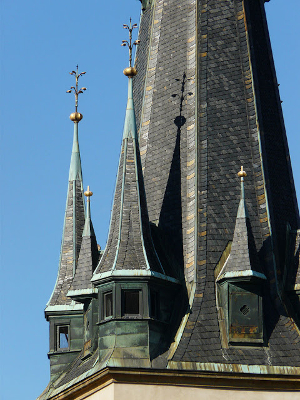The 14th-century church of Saint Stephen was one of two ecclesiastical foundations built specifically to serve the parish of Charles IV’s New Town. Construction took place between 1351 and 1392, close to the existing rotunda originally dedicated to the same saint. The tower, completed in 1401, became a significant element of the skyline of the mediaeval city.
Not long after its completion, the preacher Jan Želivský led a procession of Hussite reformers from St Stephen’s as far as the New Town hall. When the protestant priest was pelted with stones, his enraged followers bodily threw members of the town council from the windows of the hall in the so-called ‘First Defenestration of Prague’, an action that helped to spark the long-anticipated Hussite wars.
The church as we see it today was developed with neo-gothic additions and extensions by Josef Mocker in the late nineteenth century. These included a mock-gothic entrance hall, additional window tracery, and an ornate multi-turreted spire for the tower. This phase of the church’s reconstruction was concluded in 1879, thirty years after one of Bohemia’s most famous sons, the composer Antonín Dvořák, was married there.
The neo-gothic interior contains furnishings from the baroque period, including the 1738 tomb of Matyáš Bernard Braun, the most prolific sculptor of the period.
Published by the Prague Vitruvius.
published: 4. 10. 2015







